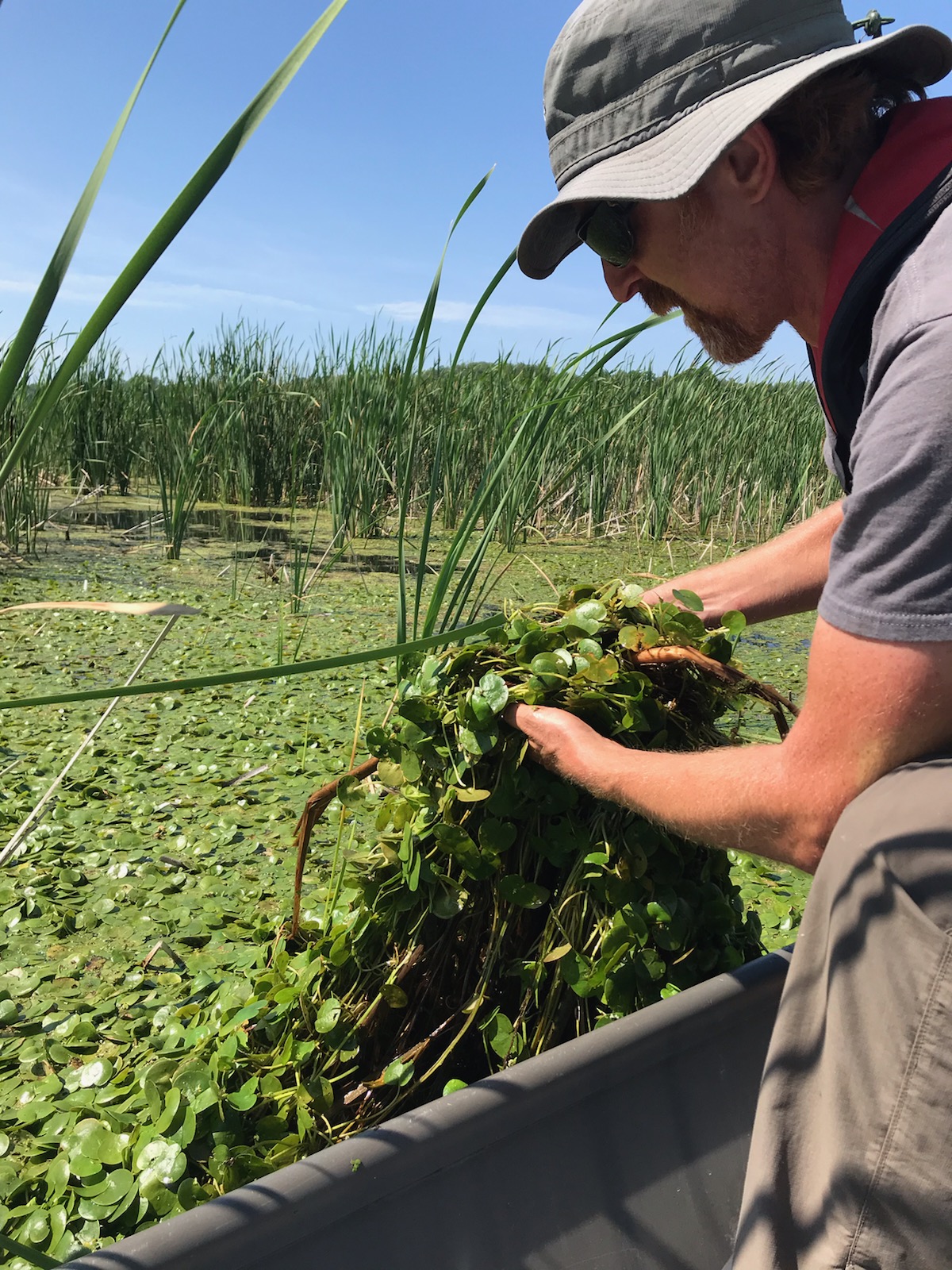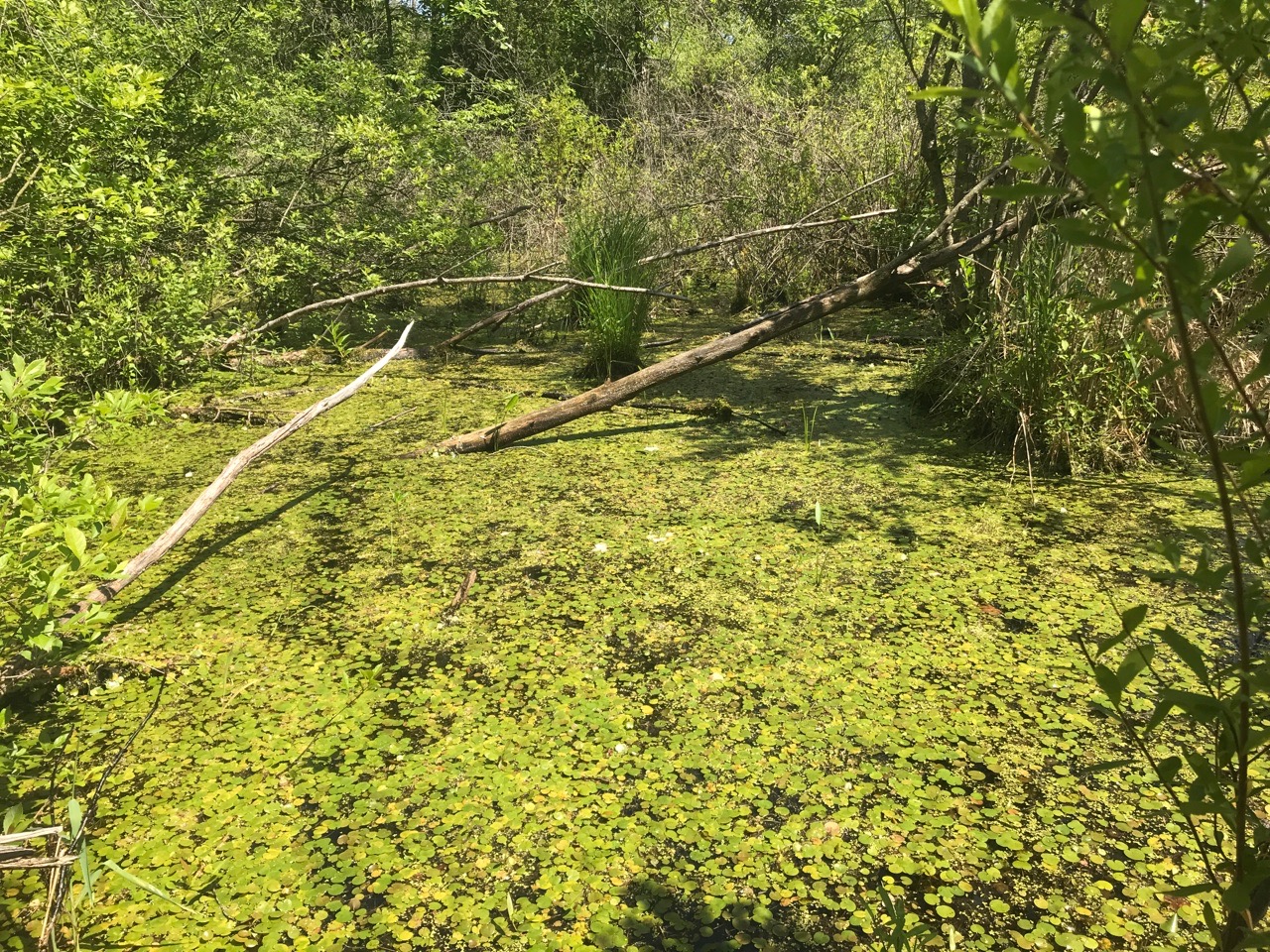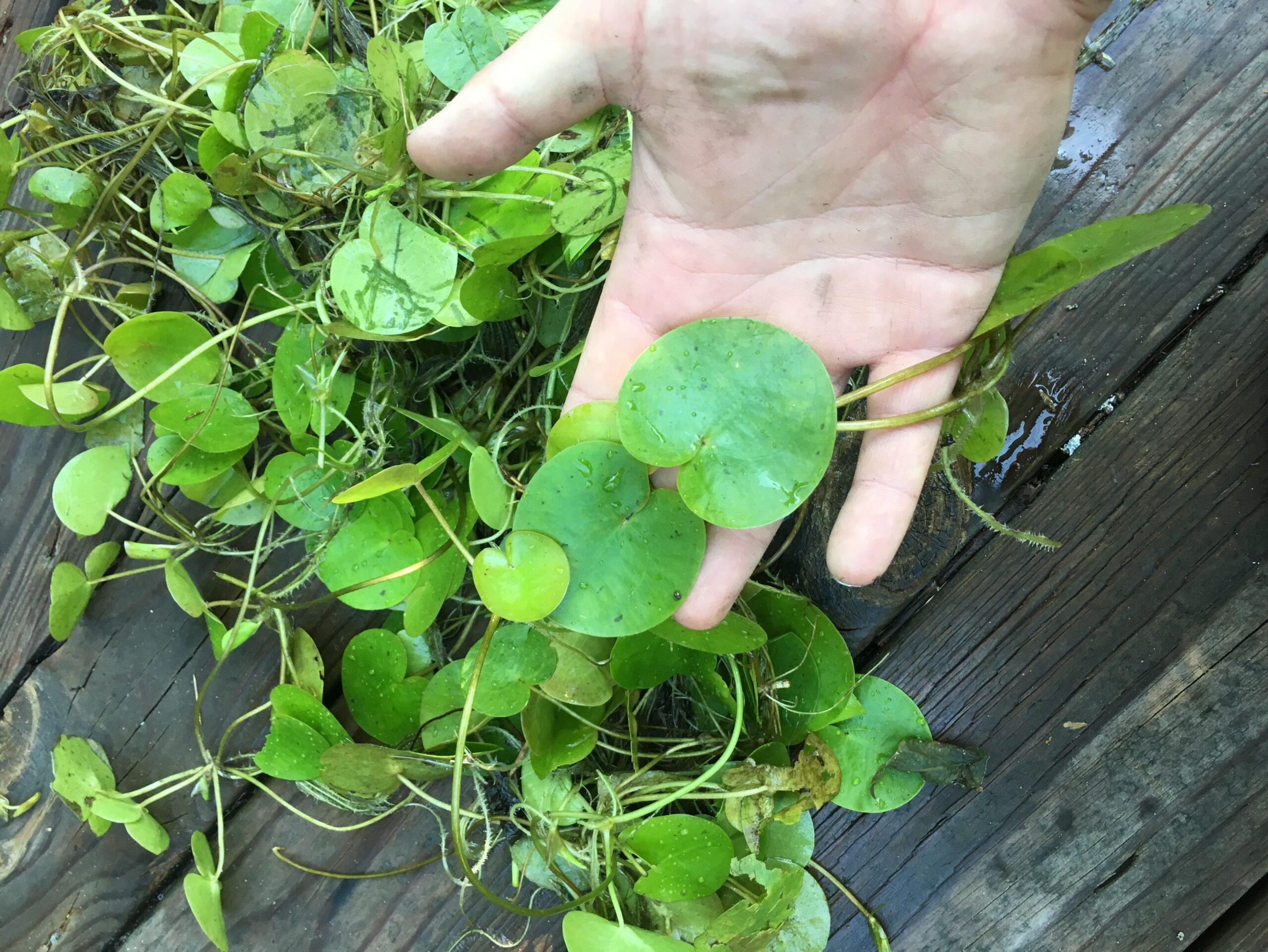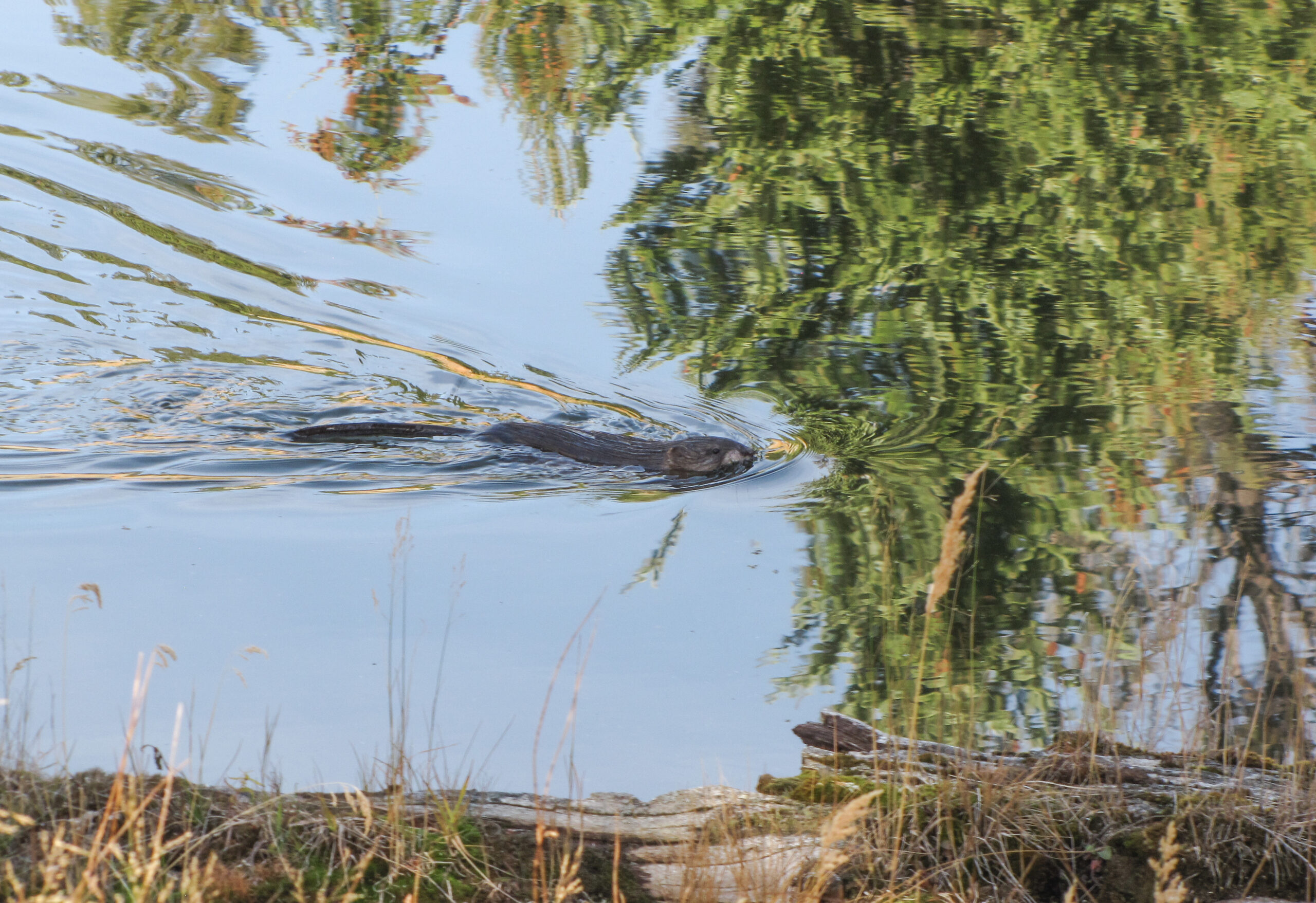MONITORING & MANAGEMENT
European Frog-bit Management
Management of European frog-bit is essential to mitigate harm and ensure this aquatic invasive species does not continue to spread throughout the Great Lakes ecosystem. The European Frog-bit Collaborative has developed resources to aid managers including summarizing information on current management techniques.
Proper disposal methods
When physically removing EFB, be sure to properly dispose of removed plants. Locate and contact your relevant local, state, or provincial invasive species management organization using this Invasive Species Management Areas Lookup Tool to assist you in understanding proper EFB disposal methods. States may also have official resources, such as this guide from Michigan (specifically, see the section on aquatic plants).
Some safe disposal methods for EFB include:
- Double-bag plant material and transport to a local landfill (if permitted in your jurisdiction).
- Dry and burn the plant material away from waterbodies (if permitted in your jurisdiction).
- Compost or bury on dry land away from waterbodies (if permitted in your jurisdiction). This may be an option if you can assure that the resulting compost is not used near any wetlands or wet environments to prevent any regrowth of plant material or turions.
Resources & Publications
Twitter Image: Protect Habitat
European Frog-bit Collaborative
Twitter Image: Preserve Habitat
European Frog-bit Collaborative
Status and strategy for European frog-bit (Hydrocharis morsus-ranae L.) management
Michigan Department of Environmental Quality and Central Michigan University






